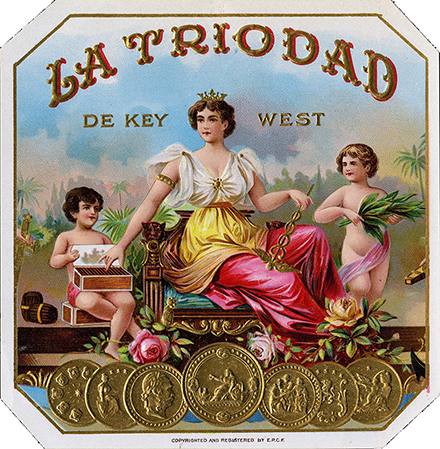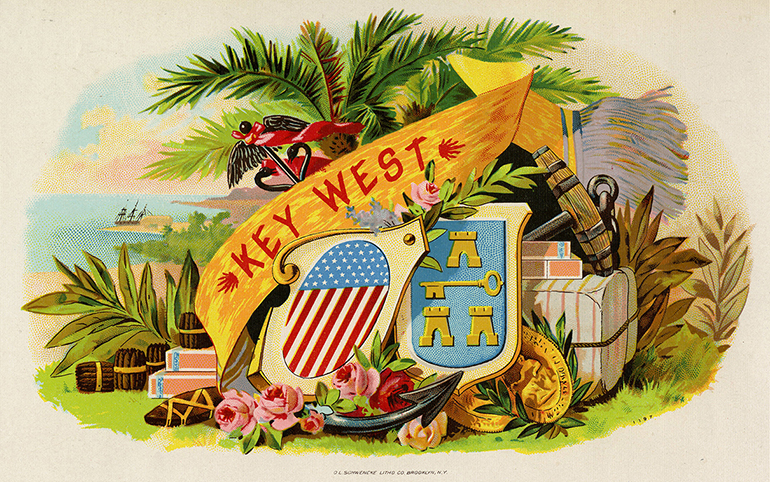 How in the world did Key West become one of the most historic cigar cities in the United States? Flashback to the late 1800s when Cuba’s booming cigar economy inspired local entrepreneurs to explore similar tobacco-based opportunities outside of its borders.
How in the world did Key West become one of the most historic cigar cities in the United States? Flashback to the late 1800s when Cuba’s booming cigar economy inspired local entrepreneurs to explore similar tobacco-based opportunities outside of its borders.
Located just 90 miles away, Key West was the ideal place to expand operations. By using Cuban laborers to roll Cuban grown tobacco, ambitious entrepreneurs could produce authentic Cuban cigars right here in America. Within a few years, Cuban immigrants arrived by the thousands to seek employment in Key West’s burgeoning cigar industry.
But cigar fever wasn’t just happening in Key West.
 By the turn of the century, over forty-thousand cigar companies had sprung up nationwide, all competing for a piece of the holy smokes. It was also when cigar box labels became one of the industry’s most powerful marketing tools. In fact, the art and themes on these labels totally revolutionized the cigar industry.
By the turn of the century, over forty-thousand cigar companies had sprung up nationwide, all competing for a piece of the holy smokes. It was also when cigar box labels became one of the industry’s most powerful marketing tools. In fact, the art and themes on these labels totally revolutionized the cigar industry.
Busty women, patriotic figures, romantic landscapes, lush tobacco fields and other captivating images found their way into the advertiser’s art. Lithograph printers used limestone to carve and transfer images to paper. Dozens of Key West cigar factories produced hundreds of different brands, each with its own distinct Key West or Cuban themed label.
During this American boom, newly invented chromolithography allowed several colors to be applied to the labels using as many as forty different stones. Companies made further investments to enhance their cigar labels by embossing and gilding them with metallic features. Some companies reported using 24-carat gold dust, while others used bronze dust. In Key West, labels were identified by their intricate lithograph labels, with up to 25 colors and gold or silver embossing.
Cigar manufacturers applied these intricately designed, artistic lithograph labels to the inside of cigar boxes to entice buyers. Store owners opened the boxes not only to display the cigars but to share the elaborate artwork printed and glued to the box’s inner lid. The inside label of the cigar box is actually credited as being one of the first point-of-purchase displays utilized for marketing a product.
 During World War I, cigarettes became the preferred form of smoking, and cigar sales flattened. Fewer companies and less competition resulted in a decline in the artistic labels on the cigar box. By the 1970s, cigar box labels had become collector’s items. While it’s still not too difficult to find beautiful labels from the 1930s and 1940s, the most collectible cigar box labels are from the 1890s to the 1920s.
During World War I, cigarettes became the preferred form of smoking, and cigar sales flattened. Fewer companies and less competition resulted in a decline in the artistic labels on the cigar box. By the 1970s, cigar box labels had become collector’s items. While it’s still not too difficult to find beautiful labels from the 1930s and 1940s, the most collectible cigar box labels are from the 1890s to the 1920s.
Now through October, you can see an amazing collection of original cigar box art during a special exhibit being staged by Key West’s Custom House Museum.
Entitled “Out of the Box: The Art of the Cigar Box,” this limited time exhibit showcases more than forty local lithographs created during the golden age of cigar box labels. The exhibit is open daily from 9:30 am – 4:30 pm at the Custom House Museum, 281 Front St. Info: 305-295-6616; kwahs.org.

